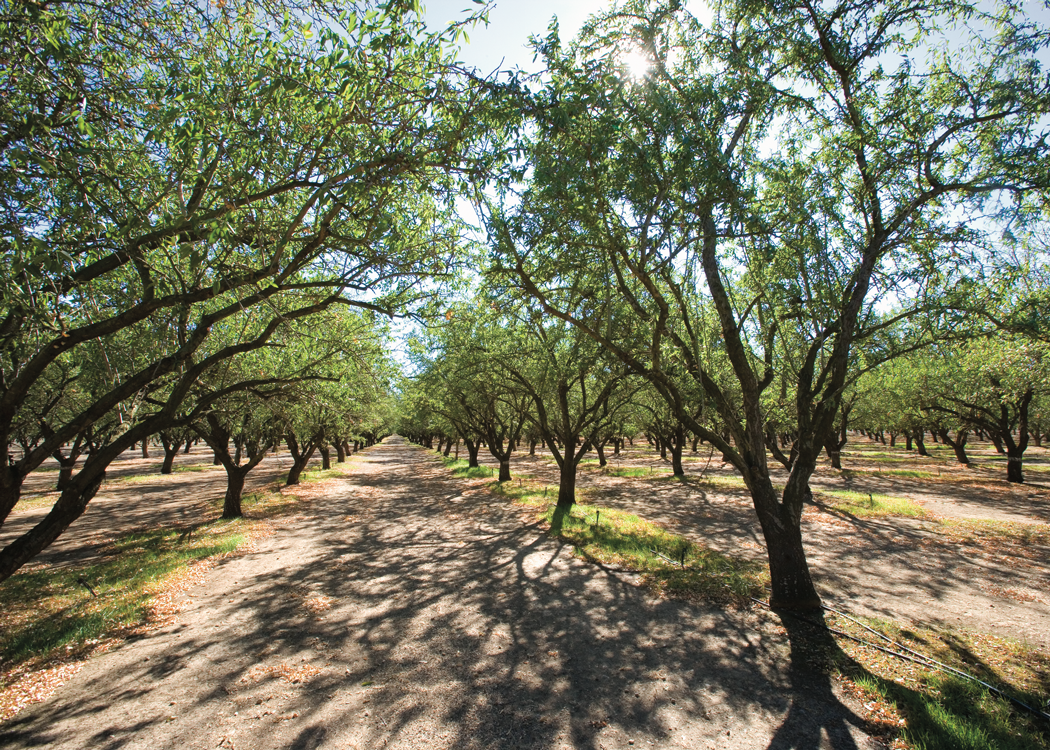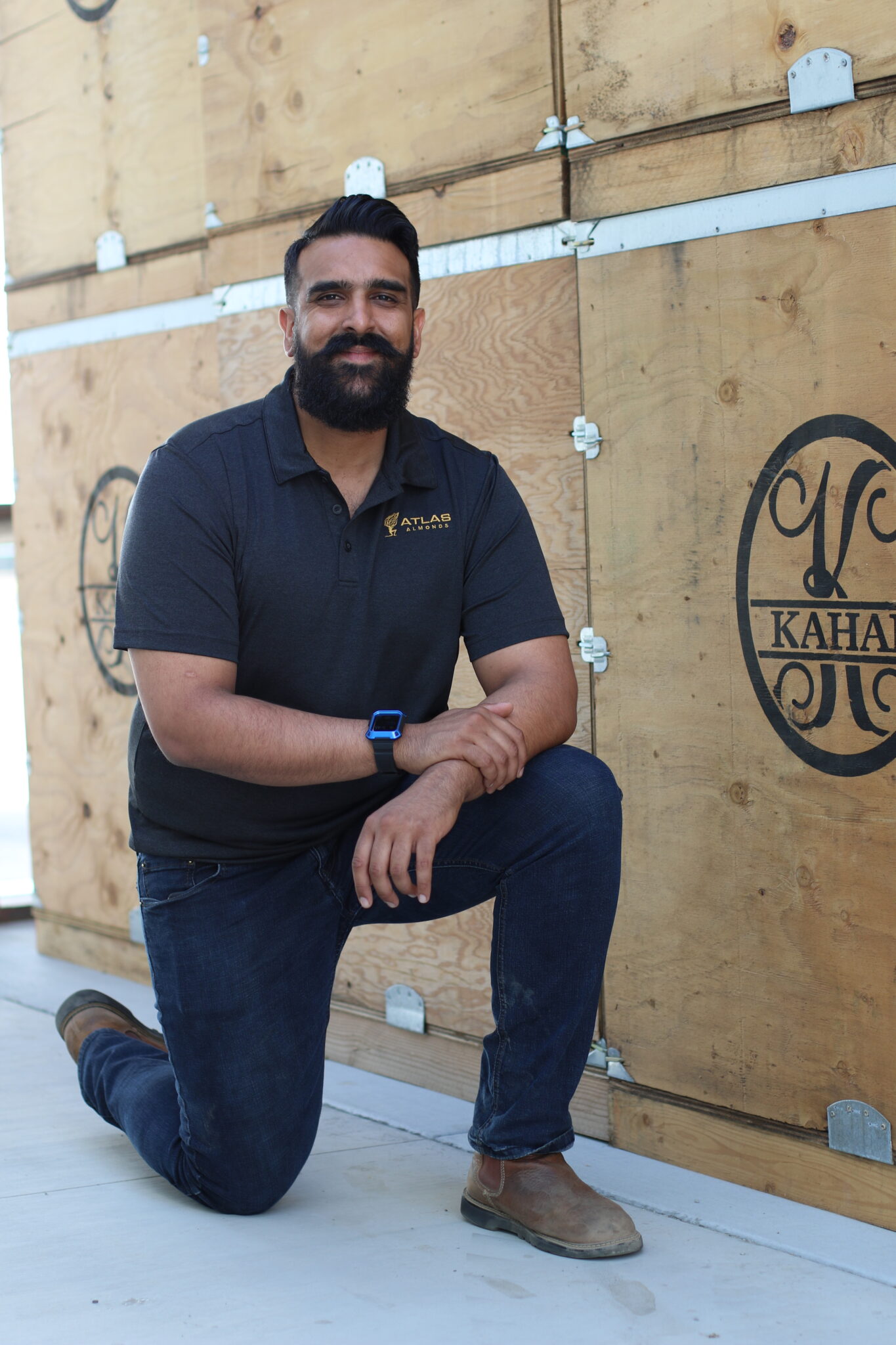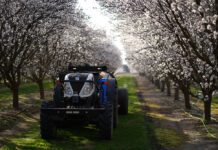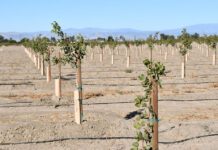
A farmer is making a decades-long decision when developing an almond orchard. If fortunate, that decision will span a quarter century. Unfortunately, digesting a 25-year timeline is a tall task for even the most methodical minds. The only sane option is to break this life cycle into phases that allow for adaptable planning. In our case, let’s break it into nice and neat five-year spans. These are the five phases: Development, Recovery, Momentum, Equity and Endgame.
While making these five-year plans, it’s important to remember that as time passes, so too will your orchard and your life. If you plan for your trees in manageable increments, then you should know what these five years will look like. It’s easy for the traffic of our lives to sweep our minds from having the chance to really sit down and plan, but it’s critical because the next five years of your life will be the most important.
Your outset on planning will be unique to your situation and where you are in life. That being said, a five-year plan at its core is just a series of questions that can be asked at any stage of your career.
Consider Time and Risk
Let’s start with the most important one: Is farming something you want to keep doing? If yes, you must decide how involved you want to be. Does your operation require your full-time effort, or are you balancing another career that would require some outside management? Then you should ask how much you would like to grow your operation.
Growth requires risks. These risks could mean taking on loans or making purchases that aren’t guaranteed bets. Aside from financial risk, you also should consider how much of your own time you truly want to put in. Growth will require more of your time, which will leave less time for your family and personal interests. Some farmers are okay with stepping outside their comfort zones while others prefer the security of maintaining the current size of their operation. Neither paths are wrong, but it’s important to consider both options.
Regardless of your goals, the next question is: Does this make financial sense? Does keeping the farm provide the margins needed to maintain the standard of living you want for your family? This question is heavily dependent on where you are in the five phases of your orchard. If you’re in the development phase, then know that you’ll be investing money for years and won’t start seeing a single dime until the recovery phase. Ask yourself where the money will come in during this phase. There’s a very slim chance that a farmer will have savings to survive on, and many farmers are too busy with their own orchard to pick up a second job. A farmer has to be ready to have the mindset that the money for everyday personal expenses during some years of the orchard may have to come from a loan. And there is nothing wrong with that as long as it makes sense in your financial planning.
Farmers must decide how much money they need for their personal expenses. We value this as a standard of living. It goes without saying that we should live within our means, and that’s the value we need to first determine. A simple way of putting it is how much money is left over after all farm expenses (cultural costs plus loan payments) plus any income that comes outside the operations. Next, you must determine whether you want to utilize that full value in your personal expenses or are looking to use less in hopes of applying it to further growth or saving for a rainy day. If you want to grow your operation, you’ll likely have to live way under your means. But if you’re comfortable with your current setup, then there’s no harm in fully using that value for more comfort in your life. It’s also important to remember that, as farmers, we have the added benefit of creating “savings” by paying off farms, which provide a base of equity.
Finally, a farmer must consider that the market and crop pricing can easily change year to year. Your financial planning should incorporate three models: poor, good and average crop prices based on historical market trends. This gives you a worst-case and best-case scenario and may help inform how much you can truly afford to spend. Hope for the best, but plan for the worst.
Identifying your financial/growth/career goals is the first step. Step two is determining what standard of living you’d like to maintain during the five-year stretch. Afterward, adjust your number based on income/expenses and adjust them in the case of poor market conditions.
I want to make sure that we do not fail to recognize a critical component in creating a five-year plan. That component is identifying the emotional part of what we do. I truly believe that being the best farmer you can will be driven by an emotional engine. We’re all fighting to put food on the table, we’re all hoping to make somebody proud, and some of us are dead-set on leaving our mark on this world. Regardless of the why, pursuing this life will start to wear on you, and there will be many days where it will take more than you have to give. So give your best shot. Plan for what’s to come.
But, when developing these grand plans, don’t forget that you’re just one person and you need to cut yourself a break here and there. After you’re done doing that, remind yourself that you are a farmer, and there is nothing on God’s good green Earth that you can’t handle.
















